Location: ** Lat**: 77 22.101 N Long: 167 05.09 W
Sunrise: 9:57 am Sunset: 7:25 pm
****Today was a good day. We began as normal - a flight brief on the bridge. We traveled yesterday afternoon back to the location we were at a couple of days ago - where the ice was thicker and we had success finding bears. The team decided that we would spend a few days in the same area looking for "bears of opportunity" or BOOs. These bears would be new bears found by following their tracks in the snow. For these bears, we would collect blood, muscle, hair, fat, and other tissue samples. We would also take basic data such as weight, length, skull size, neck diameter, etc.
Both helicopters went out today. The first was with Howard Reed as the pilot and George Durner and Eric Regher from Fish and Wildlife Services and USGS. I went out on the second helicopter with Bill Springer as the pilot and the University of Wyoming team - John Whiteman and Hank Harlow. We went in different directions to track a bear. We saw a few sets of tracks and even stopped to check out a set to get a closer look.
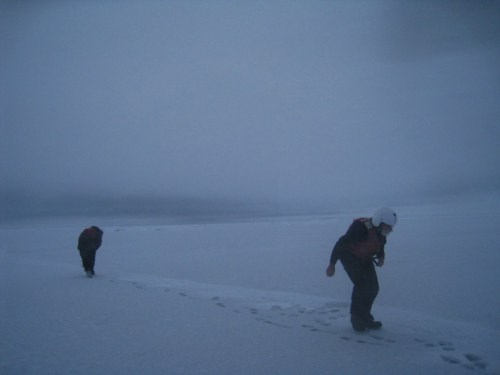
It had been about 30 minutes of searching with no real luck, when we heard the helicopter come on the radio giving their location to the Polar Sea and stating they had a bear with her cub. It was such great news because this meant we would go join the other team to help collect the samples. When we arrived, both the mother bear and her cub were darted with tranquilizer.
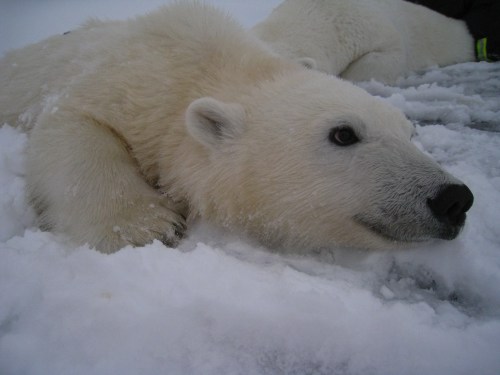
I was amazing at smoothly the team worked once on the ground - each person seemed to have a set of tasks to get the work site set-up and ready to begin data collection. At first, it took me a moment as the reality of the experience began to set in - I just stepped foot off a helicopter - onto a piece of ice - floating in the middle of the Arctic Ocean - and walked up to not one, but TWO polar bears. Any one of those things alone, is freakin' cool, but put them all together and I just can't believe how lucky I am to be able to have this experience.
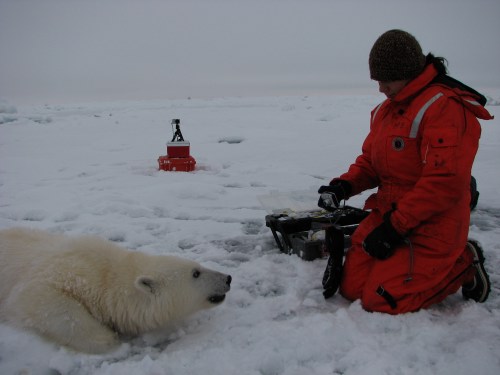
The bears were beautiful, majestic creatures. They seemed so sweet and helpless as they lay on the ice due to the effects of the tranquilizer, but I know they are amazingly strong creatures capable of surviving an extreme environment.
Immediately the team began their work - they weighed the bears using a field scale. The adult bear was about 550 pounds and the cub was about 220 pounds. I was amazed to find out that the cute, little cub was not so little - she was bigger than me! They also figured out her body fat content using a similar method as a bathroom scale would - the fancy ones that send a small electric current through your body to figure out the fat content (fat does not conduct the electricity as well as water - so it measure the resistance to current).
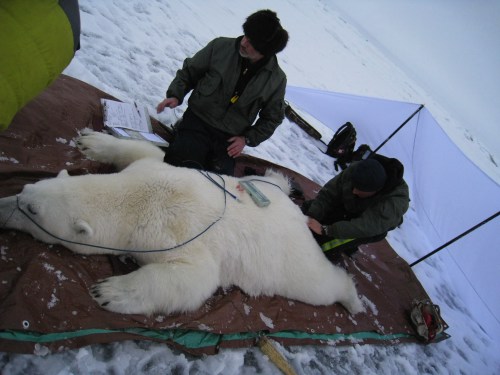
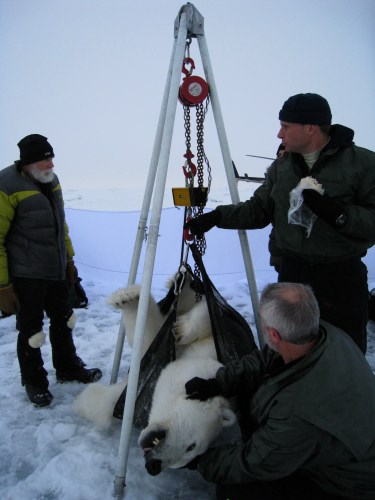
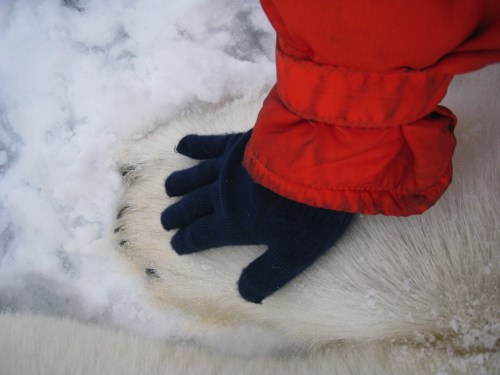
They then proceeded to collect fur, breath, and milk samples from the mother bear. The fur of the polar bear was thick and fairly coarse - not soft and fluffy at all.
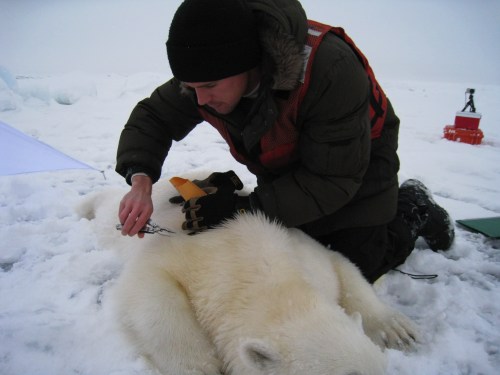
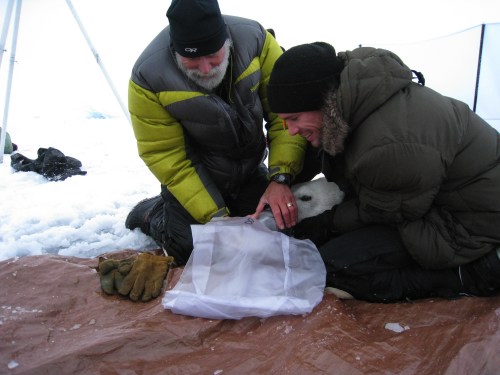
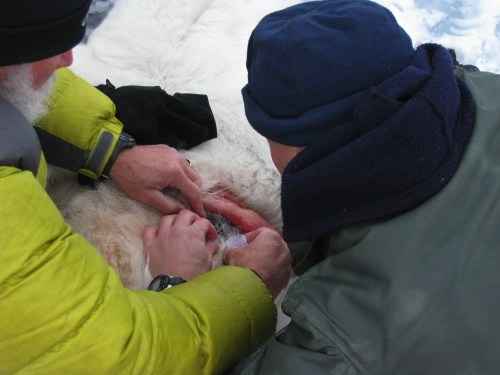
Eric collected a tooth sample from the adult bear. The reason they collect a tooth sample is because that is how they can determine how old a bear is. Each year of a bears life, they add a layer to their teeth - much like a tree. In a lab setting, the tooth can be sliced and the layers can be counted to determine the age of the bear. They do not need to do this with the cub because they already know that the cub must have been born in January/February when all the cubs of the year are born.
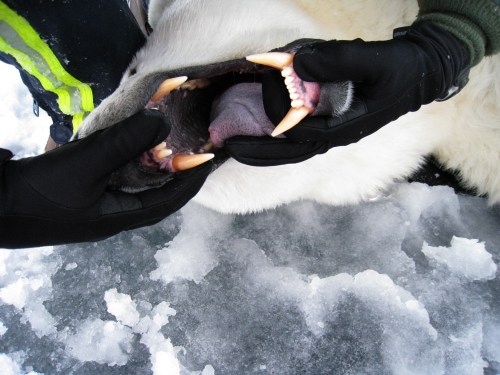
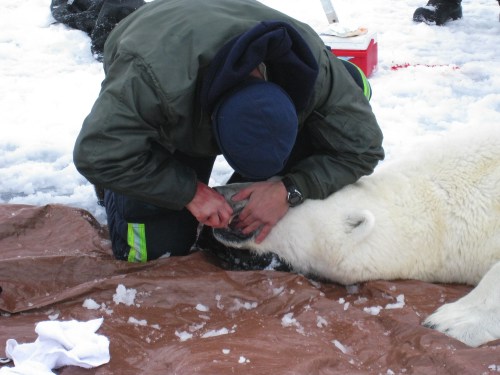
The last process of the day was collecting the muscle and fat sample from the adult bear. A small surgery is required to be able to get the samples. To protect the bear from infections, they do their best to create a sterile environment while in the field. They use sterile gloves and surgical tools. The fur is shaved and the area is covered with Betadyne, a disinfectant. They found that this bear had 5.3 centimeters of fat!
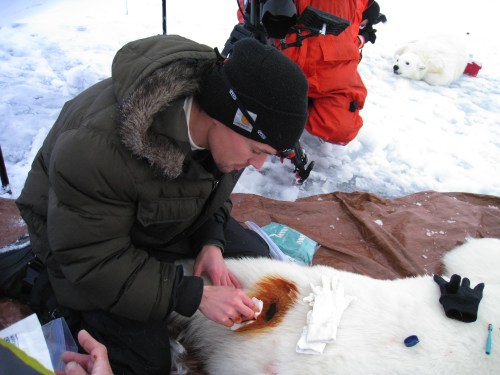
Tomorrow will be another day of searching for BOOs. I am hopeful that we will be able to find more bears to add to the data. There were other tracks that we could see from the air on the flight to and from the boat.
Sound of the Arctic Yesterdays sound of the arctic was a call for Sunday sundaes! Each Sunday, we get a special treat of sundaes! I missed it last week, but made sure to get once this week.
Listen to the following sound clip and take a guess as to what you think it might be. If you think you know, feel free to post your guess in the "Ask the Team" section of the site. Check back in tomorrow to find out the answer!


Comments